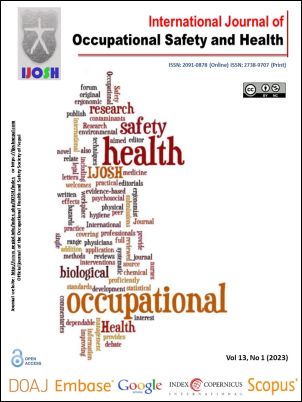Identification of Musculoskeletal Disorder among Eco-Brick Workers in Indonesia
DOI:
https://doi.org/10.3126/ijosh.v13i1.44575Keywords:
ergonomic assessment, plastic waste, eco-brick, Nordic body map, MSDsAbstract
Introduction: Plastic waste is considered one of the common vital waste problems in developing countries such as Indonesia. One proposed alternative way to reduce plastic waste is by reusing and recycling it into bricks. Eco-bricks are a form of recycled plastic waste that can be used as an alternative building construction material. Unfortunately, manufacturing workers do not ergonomically perform this work during their working hours. Therefore, it causes inappropriate body postures and leads to musculoskeletal disorders easily. This study intends to identify the posture of workers in the manufacture of eco-bricks in Indonesia
Methods: A cross-sectional study was done with purposively selected 32 eco-bricks workers from 10 waste bank communities in Central Java and Yogyakarta. Sampling was done by snowball method. This research was conducted by interviewing and collecting data on body complaints using a Nordic Body Map (NBM) questionnaire.
Results: All respondents (100%) experienced musculoskeletal disorder complaints while producing eco-bricks. Based on the results gained from the Nordic Body Map Questionnaire, the common complaints perceived by eco-bricks workers are upper neck, lower neck, back, waist, buttock, and bottom. In addition, workers also perceived complaints on the right side of the body, particularly the right shoulder, right upper arm, right elbow, right lower arm, right wrist, and right hand
Conclusion: Working postures that are not well-organized in terms of ergonomics during the production process of eco-bricks will provoke complaints on the limbs caused by the continuous load on the muscles on the right side of the body.
Downloads
Downloads
Published
How to Cite
Issue
Section
License
Copyright (c) 2023 Okka Adiyanto, Effendi Mohamad, Rosidah Jaafar, Muhammad Faishal

This work is licensed under a Creative Commons Attribution-NonCommercial 4.0 International License.
This license enables reusers to distribute, remix, adapt, and build upon the material in any medium or format for noncommercial purposes only, and only so long as attribution is given to the creator.





